Courses
The Pinehurst Experience

We have all heard stories about Pinehurst. Friends have returned home to talk about its greatness. The Ryder Cup history, the U.S. Open tournaments, the cradle of American golf, and Payne Stewart’s fist held high in the air. And while the Village of Pinehurst and the ten golf courses that complete it are the primary reason to make the trip to North Carolina, we really go for the stories. To hear them and to create them. And eventually, to be able to tell them ourselves.
The story of my family’s Pinehurst Experience is one we will remember forever.
We left Texas for North Carolina with no real expectations. My wife, Shannon, and our 11-month-old baby boy William joined me. As did my mom, Tammy, and my dad, John. None of us had been before. And, quite honestly, none of us were expecting such a perfect weekend. I wasn’t sure if this type of golf intensive trip would be a good fit for my wife and mom, both non-golfers. But there was plenty for them to do each day. I was so excited to hear how much they enjoyed their time.

Carolina Hotel at Pinehurst
We flew into Raleigh and took a rental car the remaining 70-minute drive to the Pinehurst resort. Pinehurst offers several different hotel options, but we booked our rooms in the historic Carolina Hotel. It’s the one you see in all the pictures. Built in 1901, the hotel is the definition of Carolina class. The wood floors under elegant carpet creak every few steps, reminding you that this place has held the weight of the best golfers the world has ever seen for over a century. And of course, the Ryder Cup Bar just off the hotel lobby is an immediate hat tip to the history of Pinehurst.

We arrived just after 1:30 in the afternoon, giving us enough time to check into our rooms and then head out to our first round of golf. The front desk provides you with a personalized Pinehurst bag tag which lists every tee time you have scheduled for the week. This allows for your clubs to be sent from course to course ahead of your round so you aren’t having to deal with carrying your bag around the resort. It’s seamless and convenient.
My dad and I had four rounds scheduled. First at the par-3 track, The Cradle, followed by Pinehurst No. 4, Pinehurst No. 2, and the Pinehurst No.8.
The Cradle
Shuttle buses run like clockwork all over the resort town and their affable drivers are willing to take you just about anywhere. The longest we ever had to wait for one was probably five minutes. Our clubs were waiting for us at the Clubhouse, the hub of the Pinehurst golfing community. The Clubhouse features an enormous pro-shop, locker rooms, caddie shack, The Deuce Restaurant (which overlooks the 18th green at Pinehurst No.2) and is the headquarters for courses one through five.
It’s approximately a three-minute shuttle ride from the Carolina Hotel and could easily be a nice walk if you’ve got time and good weather. It also backs up to the Thistle Dhu putting course, a 15,000 square foot putting green, complete with 18 marked holes, scorecard and beer holders on every tee. It’s a great place to spend 30 minutes. And it’s kid friendly, too.


Thistle Dhu Putting Course
We didn’t have much time but we were hungry. The bartender at the Deuce told us to make a quick burger, hot dog or sandwich at their buffet, which was perfect. We were able to get a hardy meal for $15 and give us a boost for the rest of the day. The view overlooking 18 green on No. 2 was incredible and I could’ve been just fine staying there to watch the golfers come off one of the best tracks in golf.

The Deuce Restaurant and Bar


But we headed to the Cradle, a nine-hole par three course designed by Gil Hanse in 2017. The longest hole tops out at 127 yards downhill, so a full bag is not necessary. I carried my putter and my pitching, sand and gap wedge to the first tee. The starter provided me with a carry bag and scorecard. The Cradle has been described as “the most fun 10 acres in golf” and that might be true. There are 16 speakers disguised as rocks playing music throughout the course, blasting Steve Winwood, Garth Brooks, the Rolling Stones and everything in between. Green fees at the Cradle are $50 and that gets you all day access. Kids under 17 play for free. In fact, we ended up being joined by four other golfers, one of whom was a 4 1/2 year old named Parker who had a better swing than me. We still got around the course in about an hour, including a couple of stops for drinks.

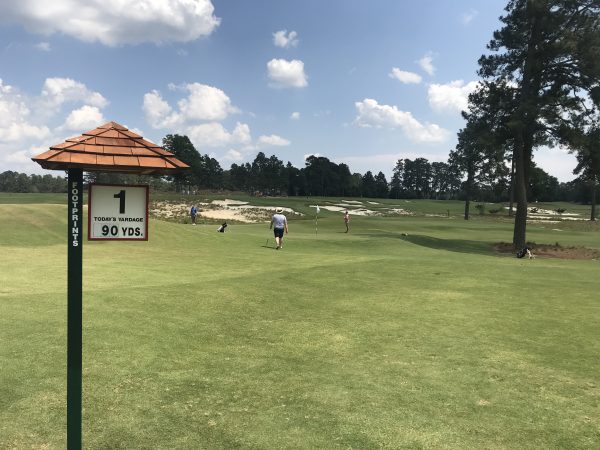

Positioned on a high part of the course behind the 3rd and 8th green sits the Pine Cone, a teardrop style camper that has been converted into a full bar. It has to be one of the coolest places to have a drink in all of golf. And with the music playing and a wedge in your hand on every shot, it’s impossible to have a bad time. Play the Cradle a couple of rounds. Have a few beers. Be happy.




The family met us for a drink back at the Deuce patio overlooking 18 of No. 2 and then we headed into town for dinner. The Village of Pinehurst itself is a cute little community, full of cafes, pubs, inns and shops. We were told to check out the Pine Crest Inn and to eat at Mr. B’s Lounge, a dark old bar full of golf history. Payne Stewart’s name is still prominently displayed on the wall where he signed it back in 1999. It was just yet another cool glimpse into the history of the golf town.

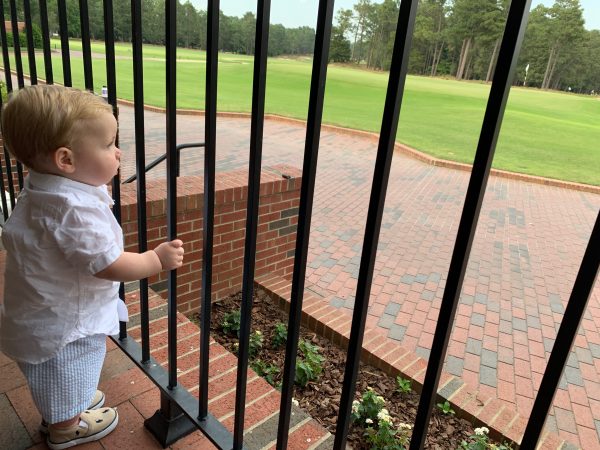


Breakfast the next morning (and then every morning thereafter) was at the Carolina Dining Room within our hotel. The family enjoyed a full breakfast buffet in an elegant dining room setting. The biscuits and gravy were out-of-this-world good. And the service, like everything else at the Carolina Hotel, was exquisite.
The girls had a couple of trips to the spa planned while the boys played golf. Shannon had a massage in the early afternoon while my mom watched baby Will. The next day, they flipped and my mom enjoyed some time relaxing herself. The pool at the Carolina hotel was also a huge hit with the family (especially William). They also loved going into town and shopping at the boutiques, which was only a 6 minute walk from our hotel.
I’ve experienced places like Bandon Dunes, which is a fantastic buddy golf trip location. And make no mistake, Pinehurst can be that, too. I saw countless groups of guys having a great time. But I realized that Pinehurst is an absolutely wonderful place to visit for entire families, whether they all play golf or not. And everywhere we went was kid friendly and welcoming. Just an absolute pleasure.
Pinehurst offers several options that include meal plans/stay and play packages. And I am telling you right now, it’s an experience you and your entire family will cherish.
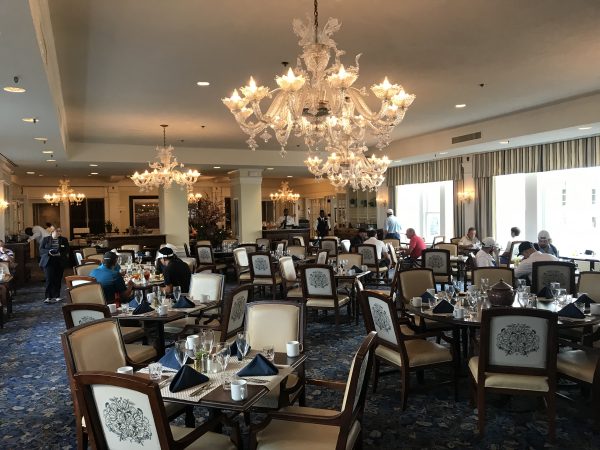





Pinehurst No. 4
Back at the clubhouse on day two, our clubs were yet again waiting for our arrival, this time on a cart pointed towards the driving range. We hit a few balls on the spacious practice, large enough to handle the type of traffic for all five courses the clubhouse facilitates.
Pinehurst No. 4 is a new renovation from Gil Hanse and, quite honestly, a great introduction to Pinehurst golf. The fairways are lined with “waste hazard” bunkers and pine needles, which both allow for grounding of the club and removing loose impediments. Whatever you are imagining in your head when you think of Pinehurst….that’s likely Pinehurst No. 4.


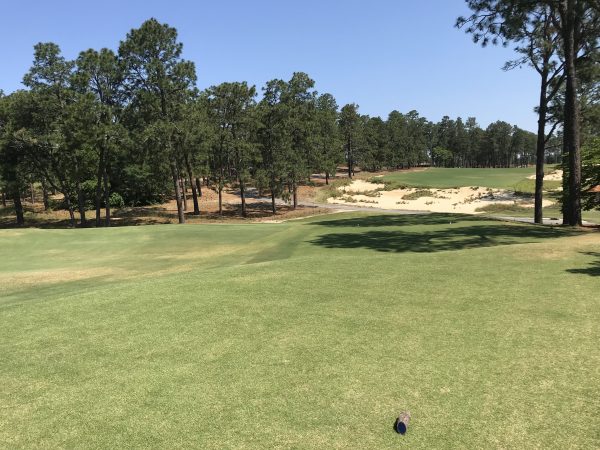
No. 4 plays 6,961 yards from the men’s blue tees. There is a tee box further back that plays at 7,227 yards, but the markers are not typically set up for regular play. Honestly, that’s a shame because standing on a few of those back tee boxes, I could tell the course would be even better from back there. It’s still a tough course from the blue tees, playing to a par 72. The elevation changes make some holes play much longer than the scorecard indicates.
The property interweaves with Pinehurst No. 2, so the landscapes are similar. But the features of No. 4 seem grander in comparison. The exposed sand areas are full of native wire grass blend, making fairway misses playable but unpredictable. And the land-forms are much more dramatic on No. 4. I was a bit surprised to see the types of elevation changes out on this course. There is a body of water that sits low in the center of the property around holes 4, 13 and 14 which provides some incredible views. When you stand on the 6th green, you can actually see parts of 15 other golf holes. It’s arguably the most beautiful view in Pinehurst.




We teed off at 9:50 on what was an unseasonably warm day for May in North Carolina. We took a cart, though the entire course was path only to preserve the pristine conditions. If the course is cart path only still when you decide to visit, I would consider hiring a caddie for this round as we ended up walking a ton anyway.
The fairways are wide and accessible and the greens are large, though they don’t play easy at all. A little local knowledge can go a long way on the greens at Pinehurst. Holes 13 and 14, in my opinion, is the best two hole stretch on the course. The first is a short par 5 but with a narrow fairway landing area off the tee between the water on the left and waste area on the right. Longer hitters can reach the green in two but the entire shot will be over water to a diagonal sloped green. It’s a wonderful risk/reward shot that I, of course, attempted with the help of some liquid courage.

The next hole stays water with a 200-yard par three to a slightly downhill green. Miss short and left and you are wet. It’s just a wonderful hole. Plenty of room right to approach the green from the front.
All in all, Gil Hanse made his mark on Pinehurst No. 4 and created a sensational companion course for the famed No. 2. If you only have a couple of rounds at Pinehurst, make sure to include both courses.


After our round, we headed out to the newly opened Pinehurst Brewery, just around the corner from our hotel. The restaurant is housed in the old Pinehurst steam power plant, which supplied the entire town their power beginning in 1895. Now it supplies the entire town with Carolina style BBQ and great local beer.
I ordered the combo platter, which came with pulled pork, chicken, sausage, and brisket. The beer was cold and the food was tasty. The pulled pork, when paired with the vinegar based East North Carolina BBQ sauce was my favorite. And this Texan actually thought the brisket was a happy substitute for what I am used to back home. My wife had a pint of the Hawaiian Delight brew, a pineapple infused beer that gave it a cider type kick. She highly recommends.





Pinehurst No. 2
Waking up the morning of your first ever round at Pinehurst No. 2 is a pretty special experience. I watched a couple youtube videos of Payne Stewart’s final holes in 1999 to get my mind in the right place. The first tee is tucked in a corner of hedgerows and the starter house is an exact replica of the Old Course Starters Box in Scotland, built to symbolize a bond of shared ideals and common values. St. Andrews is the home of golf and Pinehurst is the guardian of its traditions in the United States. Pretty cool.
No. 2, a Donald Ross build, opened in 1907 and Ross himself describes it as “the fairest test of championship golf I have ever designed.” It has been the host site for more single golf championships than any course in America, including U.S. Opens in 1999, 2005 and 2014.



My dad has never used a caddie in his entire life. Golf has never been his passion and, quite frankly, he was a bit self-conscious about a player of his skill set using a caddie for a round of golf. However, we shared one for Pinehurst No. 2 and his mind was changed completely. We got lucky, too, because our caddie, Andy Kurasz, was first class. Andy, or AK, has lived in Pinehurst since 1994 and has been a caddie for 15 years. With a bag on each shoulder, he was incredibly personable and friendly the entire round. Just as important, he knew this course like the back of his hand. If you get to play Pinehurst, ask for AK.

The greens at No. 2 might be the toughest I’ve ever played. Each one crowned like an upside down saucer, if you miss slightly on your approach in any direction, your ball will not likely hold the putting surface. No. 2 is most certainly a second shot golf course, forcing you to think about your approach shot before you tee off on each hole. And while the par 72 track plays at less than 7,000 yards from the men’s tees, it can be tipped out to nearly 7,600 yards for its Championships. With the complex approach shots and difficult greens, I can’t even imagine how tough this course would be at that length.


But the course is fair. Most fairways are lined with those famous sandy waste areas and the pine trees even wider still allow for punch outs off the pine needles. Our caddie Andy said this is the hardest course we will ever play without losing a golf ball. And he was right. We both got through it without a lost ball penalty. Andy also saved us each several strokes per side, always giving us the right target, right line, proper encouragement and reminding us to slow down our tempo and “enjoy your backswing.”

Donald Ross, who also built his home on the course, was brilliant in his routing. The course evolves naturally and uses the contours of the land to play tricks in your mind. If the fairway slopes hard right to left, like it does on the par 4 fourth, the green will slope the opposite direction, which makes putts feel like they will break a completely different way from the actual line. You need a caddie.

Home of Donald Ross

In 2010, the design team of Bill Coore and Ben Crenshaw worked to restore No. 2 to the original design. Dozens of acres of turf was removed to reintroduce the hardpan natural bunkers and native grasses to the course. The No. 2 of today is essentially the course as it was in 1907. And it’s perfect.





Walking up 18 fairway is one of those special moments in golf. The clubhouse is behind the green, full of people enjoying food and drink from the Deuce, sitting on rocking chairs and enjoying the golfers approach shots. Also in view is the Payne Stewart statue, striking that famous pose after his winning putt poured in to win the U.S. Open. I hit my drive right and had to escape short of the green. My caddie simply said “That’s okay, let’s go get up and down just like Payne did.” What an incredible feeling to play a course with so much history.
Our family was waiting for us just off the back of the green. The fitting end to a perfect day on Pinehurst No. 2.



We had dinner that night at the Carolina Room in our hotel, which, as usual, was first class. A traditional steak and fish menu with an impressive wine list to accompany. But after a long day of strategic golf on one of the world’s toughest courses, I went to sleep early and dreamed of true approach shots at waving flags.
Pinehurst No. 8
My final round at Pinehurst was on the Centennial Course, Pinehurst No. 8. The Tom Fazio design was built to celebrate Pinehurst’s 100th anniversary and it has a different style and feel to both No. 2 and No. 4. Interestingly, the course was built on the site of the old Pinehurst Gun Club, where Annie Oakley used to give shooting lessons and exhibitions.
The shuttle ride takes a few extra minutes to get to No. 8’s stand alone clubhouse. And those extra minutes change the landscape dramatically. The fairways at No. 8 are lined with a cut of rough on most holes, as opposed to the natural sand areas seen on the other courses I played. And the course is tucked in to a more heavily populated forest of trees, giving this course a more secluded feel. The par 72 plays at 6694 yards, but there are many more opportunities for lost balls here. Water and marsh land comes in to play on several holes, giving off a low country course vibe.



I had a 9:00 am tee time but was able to get off at 7:30 in order to make sure we had enough time to get to the airport later that day. I played this round alone and was the first man off, which allowed me to get around the course in a little over 2 hours in a cart. It was an amazingly peaceful round. After playing No. 4 and No. 2, this was a pleasant contrast.


The par-3 8th hole is perhaps the most beautiful hole I played at Pinehurst. At 204 yards, the tee shot still requires accuracy to the left side in order to avoid the well placed natural marshland short and right. The greens at No. 8 are large but less severe than those found on No.4 and No. 2, to make up for the more difficult marshy hazards on the course.





I am glad I played No. 8. It’s a different style course than I expected to find at Pinehurst, but it complements the experience. I would recommend you include it as a part of your Pinehurst trip as well.
After the round, we had just enough time for a visit to the Village of Pinehurst for a quick bite to eat. Our rental car was already loaded up by the Carolina Hotel staff, proving once again that they do everything right at the resort. While in town, we stumbled across the Old Sport and Gallery boutique, owned and operated by former professional golfer Tom Stewart. It was an incredible collection of golf history, books, art and antiques. And speaking with Mr. Stewart for a few minutes made me wish I had another day in Pinehurst to hear his stories. This is a must visit for any golf fan.


And with that, our Pinehurst trip was over. We played incredible courses, ate wonderful food, received first-class hospitality everywhere we went and created those Pinehurst stories we’ve heard about all our lives. Now they are ours to keep and to share. I hope you visit one day soon so you can create your own stories, too.
Just remember to “enjoy your backswing.”
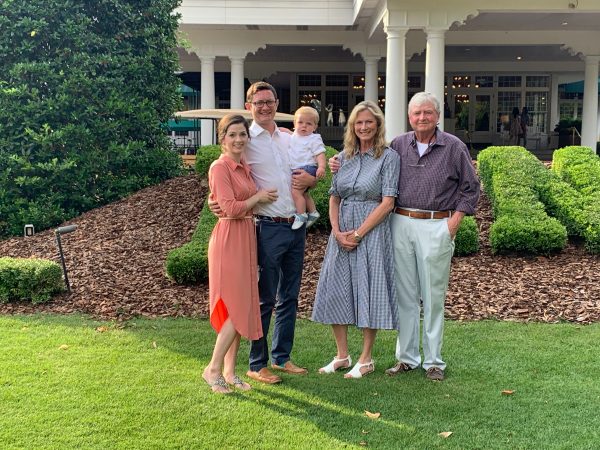
Courses
Ryder Cup 2025: Crossing to Bethpage – NY state park golf, part 3
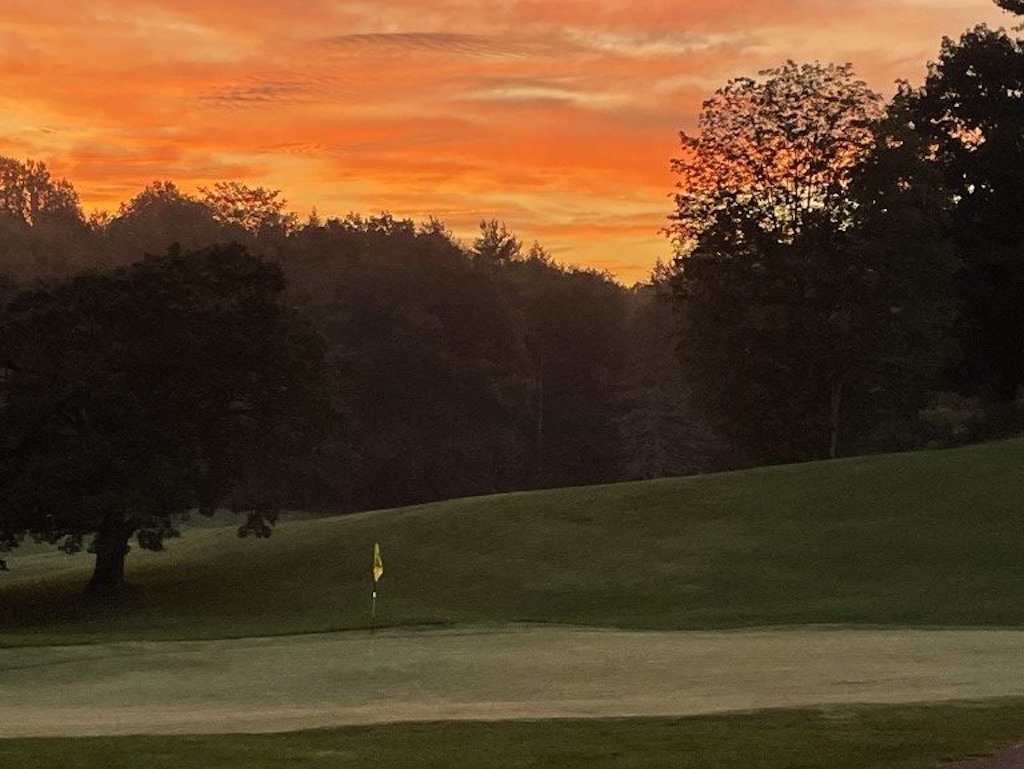
The history of the acquisition of lands for state parks and properties is a varied one across the Empire State. The first state park, Niagara Falls, was established in 1885. Many of us locals would love to have a scenic golf course located on Goat Island, with holes that ease their way next to Horseshoe, Niagara, and Bridal Veil Falls. We do understand, however, that the parkland is better suited to accessibility by and for all residents and visitors.
Work on state parks, especially the introduction of golf courses, ramped up in the 1930s, thanks to President Franklin Delano Roosevelt’s Civilian Conservation Corps and Works Progress programs. The state continues to acquire lands today, to preserve open spaces and critical habitats. For the golfing faithful, the 24 state-owned golf course properties offer affordable and accessible municipal golf.
The birth story of the 24 golf courses has the following chronology:
Battle Island – 1919
Sag Harbor – 1926
Bethpage Green (as Lenox Hill) 1923; Blue and Red – 1935; Black – 1936; Yellow – 1958
Green Lakes – 1935
Saratoga Spa – 1936
James Baird – 1948
Wellesley Island – 1960
Dinsmore – 1962 (18 hole expansion)
Sunken Meadow – 1962 (18), 1964 (third 9)
Soaring Eagles – 1963
Indian Hills – 1964
Beaver Island – 1965
Chenango Valley – 1967 (18 hole expansion)
St. Lawrence – 1967 (18 hole expansion)
Montauk Downs – 1968 (current design)
Rockland Lake – 1969
Robert Moses Pitch and Putt – 1970
Bonavista – 1970
Springbrook Greens – 1995
From the golden age of the early 1900s to the end of the last century, the courses of the New York State park system grew from one to many. Some (Lenox Hills) were adopted into the system, while others (Chenango, St. Lawrence, Dinsmore) expanded from nine to eighteen holes. What does the 21st century hold? That’s a tough question to pose, much less answer, but it concludes its first 25 years with one of the most notable golf competitions on the planet, at its flagship park.
It’s easy to divide the 19 parks that host golf courses into regions, but much more challenging to build a tour. Our second trip, to keep the disappointment to a minimum, was scuttled. Simply not enough vacation time for this working stiff to make a trip along Lake Ontario and into the Adirondacks. I’ve played enough golf in the North Country, however, to know how special those upper region layouts are.
Battle Island
From Mary Gregg and the NYS Parks website, we learn a nice amount about Battle Island. Ms. Gregg offers these insights:
“This park derived its name from a battle which took place on a nearby island on the Oswego River in the mid-1700s. In 1916 most of the land owned by F. A. Emerick was deeded to the state. Battle Island officially became a state park in 1938 when the remaining land was turned over. The popular course near Fulton lies adjacent to the Oswego River and offers golfers magnificent views from a number of its
fairways and greens. The 18-hole Battle Island State Park Golf Course is a challenging one for the budding professional and amateur player.“From my own experience working at both Green Lakes and Bethpage; Battle Island is a short course but a challenging one. We don’t have any bunkers on the course, but the greens are quite challenging, hard to find many flat areas for pin placements. The views of the Oswego River are quite manificient throughout the season and bring a variety of wilflife throughout the season as well.”
As a youth, I heard tales of Battle Island’s brief but fierce layout from an uncle, an alumnus of the city’s state university campus. Short hitters have nothing to fear at Battle Island, but the wayward driver of the ball should certainly have a long day over the golf course.
Dinsmore
Dinsmore was expanded to 18 holes in 1962. Tom Buggy penned an insightful history of the course for the Staatsburgh State Historic Site, and we are happy to link it here. The course is the northernmost state park layout along the Hudson River, located in Hyde Park, the retreat of President Franklin Delano Roosevelt.
The history of Dinsmore is an interesting, curvy one. The original nine holes on property were a collaborative affair, built on 1890s land shared by three prominent area families. Known then as the Staatsburgh golf club, the daughter of the original designer would eventually donate the land to New York State, establishing the park that includes the adjacent historic homesite. An additional nine holes were added to the property in 1962. Two years later, the original holes were rerouted to form the current back nine, along the southern portion of the property.
Rockland Lake
The Rockland Lake State Park golf course could be forgiven for the occasional bout of envy. It sits in a neighborhood occupied by some of the mid-Hudson River’s finer private clubs. A half mile away is Paramount Country Club, an A.W. Tillinghast design. Tilly is also credited with the majority of the design work at Bethpage Black, a credit that he shares with Joseph Burbeck. Across the great river sits Sleepy Hollow Country Club, whose lineage involves work by Tillinghast, but mainly from C.B. Macdonald and Seth Raynor. And on and on.
In its origin days, Rockland Lake was used as a natural ice factory by the Knickerbocker company. So pure was the ice that emanated from its waters that the lake supplied much of New York City in those pre-home electricity days. In this new millennium, Rockland Lake plays host in summer months to many of the area’s golfers. Despite its proximity to the waters of the lake, a pond, and the river, none of the holes is within a mighty strike of the wet stuff.
Rockland Lake’s full-size course was designed in the 1950s by David Gordon, a well-traveled, regional architect from eastern New York and Pennsylvania. The big course sits on the northern end of the park. The property also boasts an 18-hole short course, located in the shadows of Hook Mountain, south of the lake that gives the park its name.
Saratoga Spa
Location is often everything. When your golf course is located not only inside a state park, adjacent to a popular performing arts center within the confines of the park, and a nearby, world-famous horse racing track, you have potential for a popular spot. Saratoga Spa’s original golf holes opened in the 1930s, although no architect is given credit for the design. In the late 1950s, William Mitchell did an overhaul of the layout, expanding it to the trace that is in the ground today. During the mid-2010s, Barry Jordan, another regional architect, came in to rebuild the entire 10th green and upgrade bunker drainage throughout the golf course.
Saratoga Spa boasts a testing, 18-hole layout that stretches beyond 7,000 yards. Alongside is a short course, with seven par-three holes and two par-fours. The course features a new fleet of motorized carts with GPS monitors, ensuring that golfers know where they stand at all moments of the round. In addition to the golf course, nearly a dozen natural springs flow through the Saratoga Spa Park. A large pool complex for recreation completes the park’s offerings.
Springbrook Greens
Alan Tomlinson may be the Hayden “Sidd” Finch of golf course architecture. He completed Springbrook Greens in 1995 … then disappeared. Nothing more is known about him, and no other courses bear witness to his skills as a router of golf holes. Springbrook Greens tips out at 5,800 yards and finds itself close to Lake Ontario’s southern shore. If you drew a vertical ray to the south, it would drop a bit west of Syracuse. It’s not much away from Battle Island, so there are a few state courses within a brief drive of each other, in this part of the state.
Springbrook Greens had an interesting first quarter-century of life, then COVID hit, and like many places, things went a bit off path. Fortunately for the region and its golfers, the Randall family leased the course from New York State Parks (much like Bonavista in an earlier step of this series) and brought the course back from a near-death experience. It’s pretty easy for a course to go astray, especially when basic maintenance elements break down. Among the images in the gallery, one will stand out for its lack of grass. Ron Randal tells the story like this:
“This was the 10th green in December the year before I took over. This was the worst but many had large spots that looked like this. I assumed it was a lack of proper maintenance but what I didn’t realize was that a lot of it was just irrigation heads that didn’t work or didn’t work right. This one was missing a head so the front 2 didn’t work at all and of the back 2 only one worked properly. Thank god it was a fairway head or there would have been no grass left at all.
“I assure you it looks better now.”
According to Randall, the fairways are back to what any destination course might offer. Putting surfaces have been expanded back to their original widths, offering a great many hole locations for diversity. Collars around each green and run-up areas have also been added to the course. The course spreads out over nearly 200 acres, is home to diverse, multitudinous wildlife, and amazing views.
Current projects include the rebuilding tees and the addition of back tees, to stretch the tips a bit. Trees have been pruned to allow sun to reach the most sensitive, grass-growing areas (greens and tees). If there ever was a look-at-us-now project among the panel of NYS Park golf courses, Springbrook Greens would give all others some stiff competition.
Saint Lawrence
The St. Lawrence state park course, a nine-hole affair across a wee road from the eponymous seaway, might nip Beaver Island (near Buffalo) for the Closest To Canada prize. The layout sits barely across a road adjacent to the shoreline, less than a mile from Ontario’s beaches. Since the STLS is a bit thinner than the mighty Niagara, it appears that the award goes to St. Lawrence.
St. Lawrence State Park Golf Course is a stand-alone feature, made up simply of a golf course. It was a privately owned layout for many years, near the city of Ogdensburg. The state purchased the acreage in the 1960s and leases the course to it present owners. The St. Lawrence course is a tiny, tidy experience, essentially a series of nine, straightish holes, the fairways are interrupted by the occasional crossing appearance of a wee burn, in the Scottish tradition.
From our inside folks at the course, we received this batch of intel:
“The Ogdensburg Golf Club was started in 1919 by a group of five Ogdensburg area golfers as a private golf and social club. Stock was issued to the original five investors and golfing privileges were obtained by the payment of annual dues to the club. The 151acre golf club, which consisted of five holes along the St. Lawrence River and four holes across New York State Route 37 were sold to New York State on December 18, 1967.“The State of New York had plans to develop the remaining land into an 18-hole golf facility but those plans never came to fruition. The St. Lawrence State Park Golf Course was operated by New York State Parks until May of 2011 when it was leased to Golf Services, Inc. of Wellesley Island, NY.”
Wellesley Island
In the words of Peter McDermott, manager at the Wellesley Island State Park Golf Course, “(It) is a relatively short 9-hole course at 2,695 yards par 35 but the greens are tight and rewards the accurate shot. Some of the more notable holes are two very challenging par 4’s, two drivable par 4’s and two scenic par 3’s. For an added bonus, enjoy the captivating views of the St Lawrence River!”
Unlike its upstream neighbor at St. Lawrence State Park, Wellesley Island sits on the northern bank of the river, but still within the confines of New York State and the USA. The Wellesley course occupies a massive meadow, confined by trees but not defined by them. Rather than build a traditional, tree-lined fairway sequence common to the north country, Wellesley channelled the British Isles tradition of a wide open space for golf.
With one chapter remaining in our story of New York State Parks golf courses, we’re nearing the sad yet proud end to our journey. Still to come is the Long Island sojourn, followed by the Ryder Cup competition itself, at Bethpage Black.
Crossing to Bethpage Part One: Green Laks, Beaver Island, James Baird, the Bethpage Five
Crossing to Bethpage Part Two: Soaring Eagles, Chenango Valley, Indian Hills, Bonavista
Crossing to Bethpage Part Three: You just read it!
Courses
The BEST hidden gem links courses in the UK & Ireland
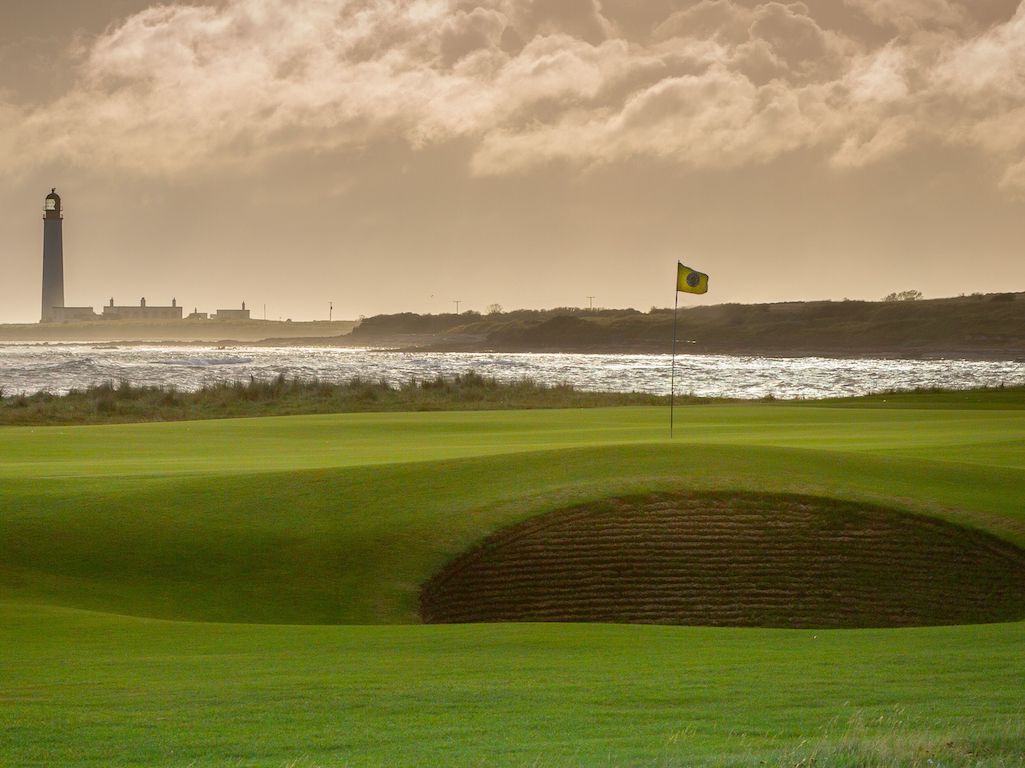
Another Open Championship has come and gone and links golf was once again in the spotlight at Royal Troon! For those who have never played a links course (like myself), it sparks a desire to fly across the pond to experience it for ourselves. While a golf trip to the UK or Ireland is a bucket-list item, most people look to play the big-name courses (Old Course, Carnoustie, Lahinch, Royal Portrush,etc.), but don’t realize they can get a similar experience by traveling to some of the lesser known destinations where you will find some of the purest links courses in the world. With this in mind, here are our picks for the best hidden gem links courses you should play when you book a UK or Ireland trip:
IRELAND
We start our list off with a 36-hole club in the Northwest of Ireland, a remote area of the Emerald Isle that is known for its rugged terrain and spectacular scenery. Bordering the Wild Atlantic Way, Ballyliffin is relatively newer (est. 1947) but offers golfers one of the purest links golf experiences anywhere in the country. While not easy to get to, the two courses onsite (Old and Glashedy) are well worth the travel with large dunes shaping the fairways that overlook the North Atlantic Ocean and a myriad of pot bunkers everywhere you look. Even Rory McIlroy believes that “Ballyliffin’s two courses are a must play on any golf trip to Ireland.” and we tend to agree.

How to incorporate Ballyliffin in a golf trip:
Stay:Ballyliffin Lodge, Hotel & Spa
Play: Old Links & Glashedy Links at Ballyliffin, and Old Tom Morris Links or Sandy Hills Course at Rosapenna
The next course on the list is in the Sligo area of the Northwest where we find Enniscrone, roughly 3 hours (by car) south of Ballyliffin. Like many links courses, Enniscrone was originally a 9-hole course when it was opened in 1918 before an additional 9 holes were added 12 years later. In 1970, Eddie Hackett was tasked with redesigning the course to help the two 9-hole courses flow effortlessly into one 18 hole layout. A big feature that can be seen throughout your round here are the towering dunes that shape the course and protect some holes from the ocean winds. Built right out of the landscape of the dunes bordering the sea, the course has a lot of undulation in the fairways and greens with some elevated tee boxes providing unreal views of the natural land.

How to incorporate Enniscrone in a golf trip:
Stay: The Glasshouse Hotel, Sligo
Play: Enniscrone, County Sligo, and Donegal
Additional Courses: Strandhill, Carne, and Narin & Portnoo
Another fantastic gem on the Northwest coast of Ireland is the NEW (2020) St. Patricks Links at Rosapenna Hotel & Golf Links. The land was purchased back in 2012 which was already a 36-hole facility and Tom Doak was brought in to reimagine the property to the layout it currently is today. Large sand dunes shape the front 9 holes before heading back through some more subtle dunes back towards the clubhouse. The course offers elevation changes with some tee boxes sitting atop the dunes offering spectacular views of Sheephaven Bay and beyond. With two other courses and a fantastic hotel on property, this destination is all you could ever ask for.

How to incorporate St. Patricks in a golf trip:
Stay: Rosapenna Hotel & Golf Links
Play: St. Patrick’s Links, Sandy Hills Course , and Old Tom Morris Links (all at Rosapenna)
For our last hidden gem in Ireland, we head 30 minutes north of the country’s capital, Dublin, to The Island Club. Built along rugged terrain and the highest sand dunes on the east coast of Ireland, the Island Club is situated on a small peninsula surrounded by water on three sides providing a difficult challenge, especially with the winds. Founded in 1890, the Island Club continues to be ranked in the Top 10 courses in Ireland and has held some Amateur Championships and Open Championship Regional Qualifiers.

How to incorporate The Island Club in a golf trip:
Stay: The Grand Hotel, Malahide
Play: Island Club, Portmarnock Old, County Louth
Additional Courses: Royal Dublin
SCOTLAND
Located along “Scotland’s Golf Coast” of East Lothian is where we find the classic links of Dunbar. Opened in 1856 with only 15 holes, this is one of the many courses in Scotland that Old Tom Morris had a hand in crafting. Laid out along rocky and rocky terrain, the course is only 6500 yards long and while not long by modern standards, the course requires shot making and proper club selection to play well. The course has held many national and international tournaments including a few rounds of The Open Final Qualifying.
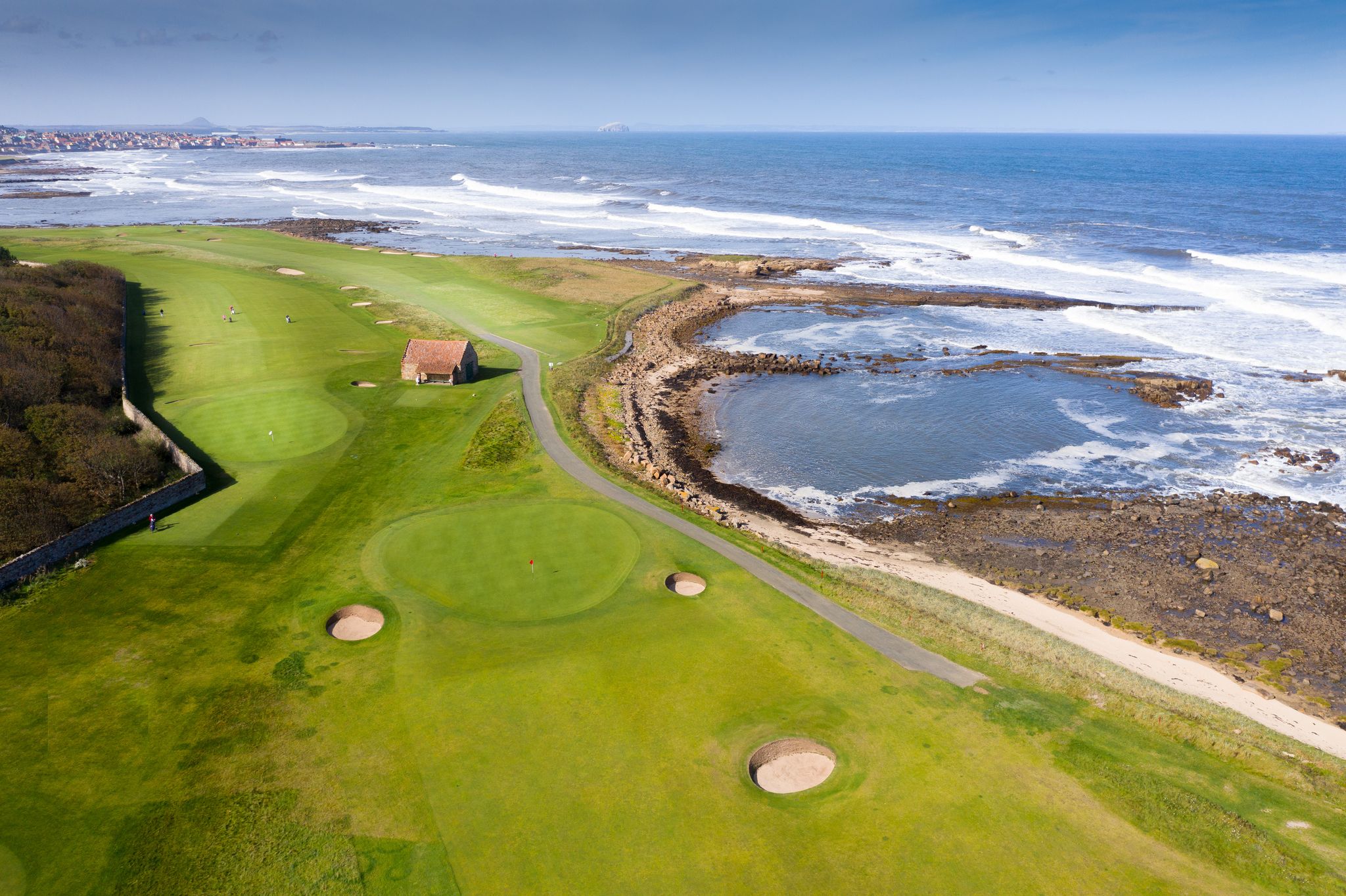
How to incorporate Dunbar in a golf trip:
Stay: No. 12 Hotel & Bistro
Play: Dunbar, Gullane (No.1), North Berwick
Additional Courses: Craigielaw, Kilspindie, Gullane (No.2, No. 3)
The next course on our list brings us to the Scottish Highlands, one of the lesser traveled destinations in Scotland, but still home to some amazing links courses including Cruden Bay! Located 25 miles north of Aberdeen on the east coast of the Highlands, Cruden Bay was opened in 1899, although history would indicate golf has been played at the property since 1791. Another Old Tom Morris design, the course is consistently ranked in the Top 25 of courses in Scotland and it is easy to see why. At only 6600 yards, it is relatively short, but the natural lay of the land provides elevation changes, punchbowl greens, and some large, 3-story high dunes that offer spectacular views for a classic links experience.

How to incorporate Cruden Bay in a golf trip:
Stay: Leonardo Hotel Aberdeen
Play: Cruden Bay, Trump International Links, Royal Aberdeen
Additional Courses: Murcar
We head back to the Highlands just north of Dornoch to where we find Brora Golf Club. Similar to a lot of links courses, Brora opened as only 9 holes in 1891, but that only lasted for 9 years before an additional 9 was added in 1900 before a James Braid redesign in 1924. At just over 6200 yards, this is one of those courses that will make you appreciate links golf in Scotland with cattle and sheep roaming freely around the property. The course is a typical links routing with the front 9 going out and the back 9 coming back to the clubhouse. The defense of the course is the wind (naturally), but the greens are relatively small with pot bunkers standing guard to catch errant approach shots.

How to incorporate Brora in a golf trip:
Stay: Royal Golf Hotel, Dornoch
Play: Brora, Royal Dornoch – Struie & Championship
Additional Courses: Golspie, Tain
Staying in the Scottish Highlands, the last Scotland links gem on the list is just outside of Inverness at The Nairn Golf Club. The narrow fairways are fast and firm leading to decent sized, tricky greens that roll true, but are guarded by devious pot bunkers. The first seven holes play right along the water and with not a ton of elevation changes, spectacular views across the Moray Firth can be seen throughout the course. With fantastic course conditions throughout the season, this fantastic links is an absolute must-play when visiting the Highlands.

How to incorporate Nairn in a golf trip:
Stay: Kingsmills Hotel, Inverness
Play: Nairn, Castle Stuart (Cabot Highlands), Fortrose & Rosemarkie
Additional Courses: Nairn Dunbar, Moray

Golfbreaks by PGA TOUR highly recommends you start planning your trip across the pond AT LEAST 12-18 months in advance in order to secure tee times and hotel rooms over the dates you desire. With more and more people taking up the game of golf, these bucket list trips have already become extremely popular and will continue to gain interest so make sure to start planning early!
RELATED: Open Championship courses you can play (and when the best time to book is)
Editor’s note: This article is presented in partnership with Golfbreaks. When you make a purchase through links in this article, GolfWRX may earn an affiliate commission.
Courses
Open Championship courses you can play (and when the best time to book is)

The final major of 2024 is nearly here as the top golfers head to Scotland’s southwestern coast to battle for the claret jug at Royal Troon. Golf’s original major dates all the way back to 1860 and has been played at 14 different courses throughout the United Kingdom (yes, this includes Northern Ireland) providing countless memories including celebrations, heartbreak, and unique moments that will never be forgotten (looking at you Jordan Spieth).
With The Open teeing off less than a week from now, we wanted to highlight some of The Open Championship’s finest links courses that should play when you make the journey to golf’s homeland:
- Old Course at St. Andrews
- Carnoustie
- Muirfield
- Royal Portrush
- Royal Troon
- Royal Birkdale
- Royal St George’s
Old Course at St. Andrews

Do we even need to say anything else? The “Home of Golf”, host of 30 Open Championships, the most coveted tee time in the WORLD, there are a million reasons to have St. Andrews on your links golf bucket list. From the double greens, to the tee shot over the Old Course Hotel, to the walk up 18th fairway with the town buildings framing a picturesque scene (especially at dusk), every golfer should make the voyage to St Andrews at least once in their life.

Carnoustie

Carnoustie – Championship Course
Roughly 25 miles north of St. Andrews lies the devious links of Carnoustie, often recognized by the large white Carnoustie Golf Hotel as the backdrop of the 18th green. While the course has only hosted The Open 8 times, it is considered to be one of the hardest layouts in The Open rota (just ask Jean Van de Velde) although not that long, playing just under 7000 yards from the tips.
Muirfield

Located right next to this week’s host of Scottish Open (The Renaissance Club), this fantastic links layout has hosted the prestigious Championship 16 times since 1892. The narrow fairways and penal rough requires precise shots off the tee while avoiding the devious pot bunkers is a must. The course is set away from the coastline so you won’t get the sweeping ocean views, but a round at Muirfield is one the premier tee times in all of Scotland (so make sure you book early – 12-18 months at least).
Royal Portrush

A view of the new 572 yards par 5, seventh hole designed by Martin Ebert on the Dunluce Course at Royal Portrush Golf Club the host club for the 2019 Open Championship in Portrush, Northern Ireland. © 2018 Rob Durston
Our next stop brings us across the Irish Sea to the northern coast of Northern Ireland and the popular Royal Portrush. Having hosted The Open only twice in its illustrious history, Royal Portrush is a golfer’s dream with 36 holes of pure links golf set against a gorgeous backdrop of the ocean and cliffs. The Open Championship will return to Portrush in 2025 and YOU CAN BE THERE to watch it all in person!
Royal Troon

TROON – JULY 26: General view of the ‘Postage Stamp’ par 3, 8th hole taken during a photoshoot held on July 26, 2003 at the Royal Troon Golf Club, venue for the 2004 Open Championships, in Troon, Scotland. (Photo by David Cannon/Getty Images)
The host of this year’s Open Championship, Royal Troon is home to one of the best par-3 holes in all of golf, “The Postage Stamp.” A downhill 125-yard tee shot to a minuscule green surrounded by bunkers on all sides makes it one of the more challenging holes. Another hole that adds to the challenge is the 601-yard par 5 that used to be the longest golf hole in Open Championship history. This year will be the 10th Open Championship held at Royal Troon, the first since 2016 when Mickelson and Stenson had a battle for the ages in the final round.
Royal Birkdale

For the next course on the list, we have to head down to the northwest coast of England just outside of Liverpool. Consistently ranked in the Top 10 courses in all the UK, this 10-time host of The Open has hosted many other prestigious events such as Ryder Cups, Women’s Opens, and more! The course is laid out with fairways running through flat-bottomed valleys surrounded by high dunes which provide many blind shots throughout the course. The Open returns to Royal Birkdale in 2026 so it won’t be long before it is back in the spotlight.
Royal St. George’s

For the final course on our list, we are staying in England, but heading across to the southeastern side of the country to Kent. Royal St. George’s is 4th on the list of most Open Championships hosted with 15 (1 behind Muirfield) the most recent being Collin Morikawa’s victory in 2021. RSG is the only active course on The Open rota in this part of the UK, but two former hosts (Prince’s and Royal Cinque Ports) are within 3 miles of the property. The expansive course is laid out with holes separated by dunes with heavy rough, undulating fairways, and deep pot bunkers to challenge your game. While it may not be mentioned in the discussions of St. Andrews, Carnoustie, and the like, Royal St. George’s is still a Championship layout that is worth the trip across the pond.

With these big-name courses in such high demand, it is important to note that if you want to play them, you need to start planning your trip early. Golfbreaks by PGA TOUR, the world’s #1 rated golf tour operator, suggests planning and booking your trip at least 12-18 months in advance in order to secure a tee time at the courses you want. The UK & Ireland specialists at Golfbreaks by PGA TOUR have the knowledge to help tailor the perfect golf trip for your group so you can play big-name courses and hidden gems you might not have heard of. If you’re ready to start planning your bucket list trip across the pond, make life easier and go with Golfbreaks by PGA TOUR.
Editor’s note: This article is presented in partnership with Golfbreaks. When you make a purchase through links in this article, GolfWRX may earn an affiliate commission.














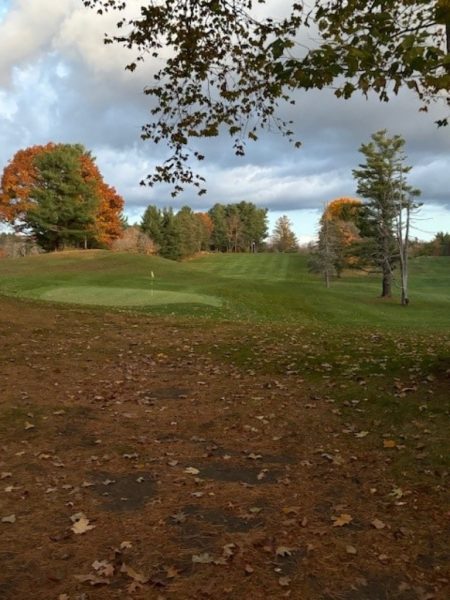
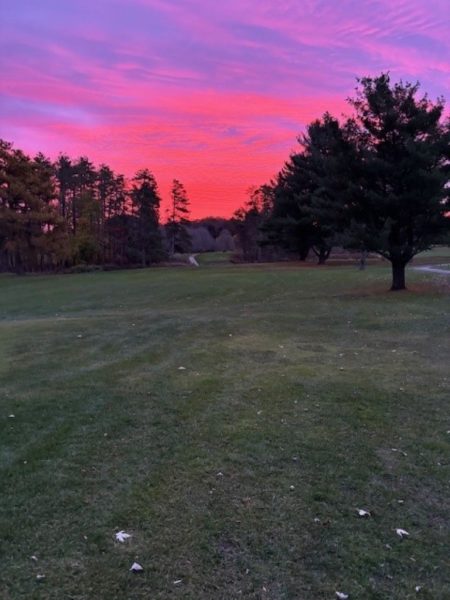
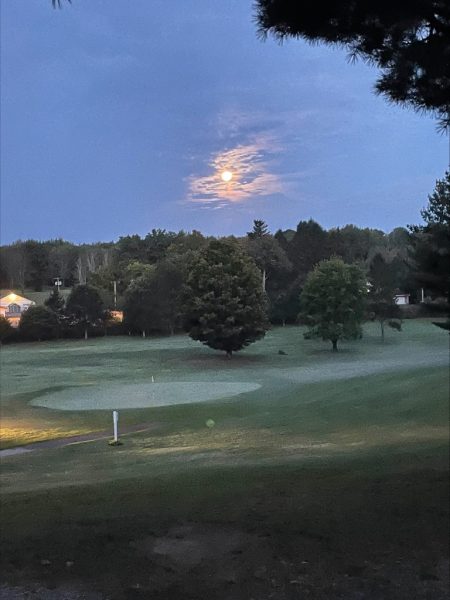
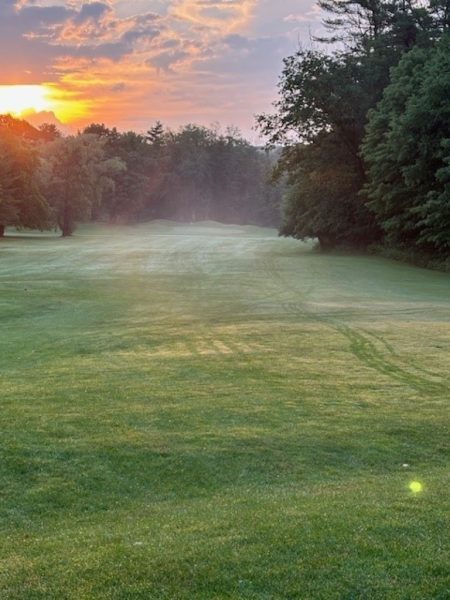
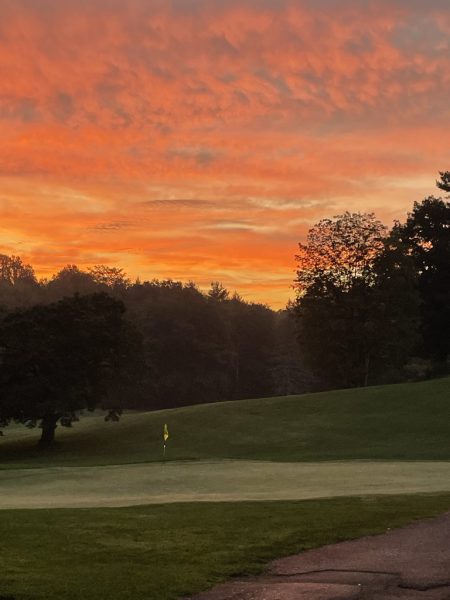
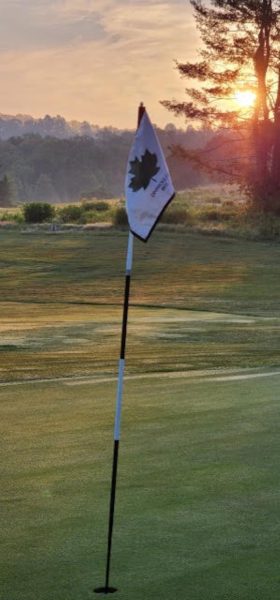
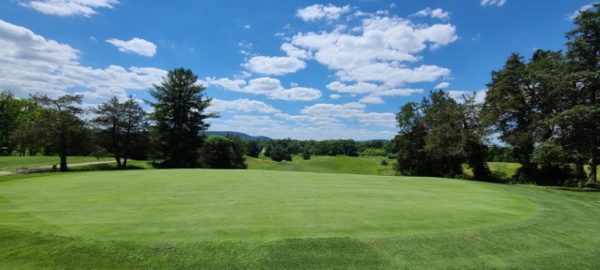
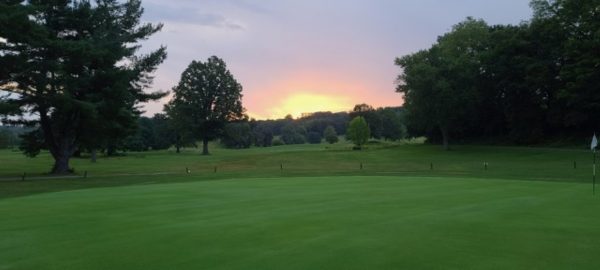
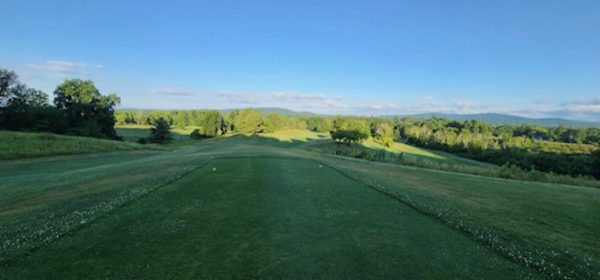
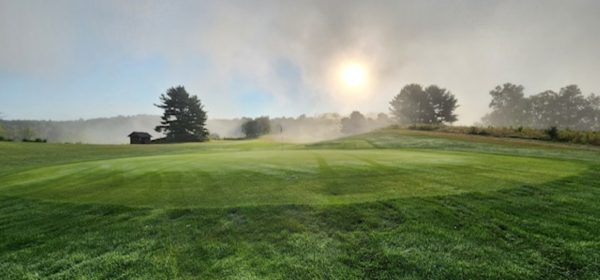
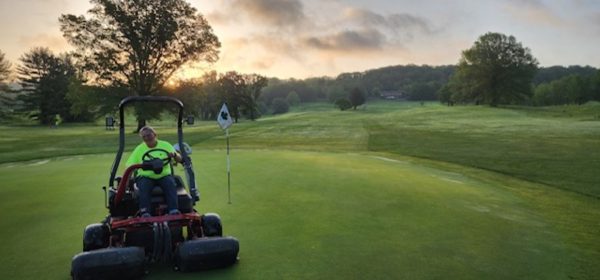
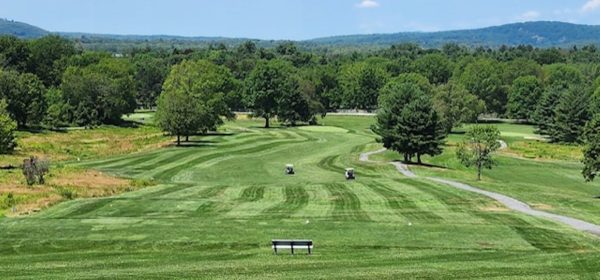


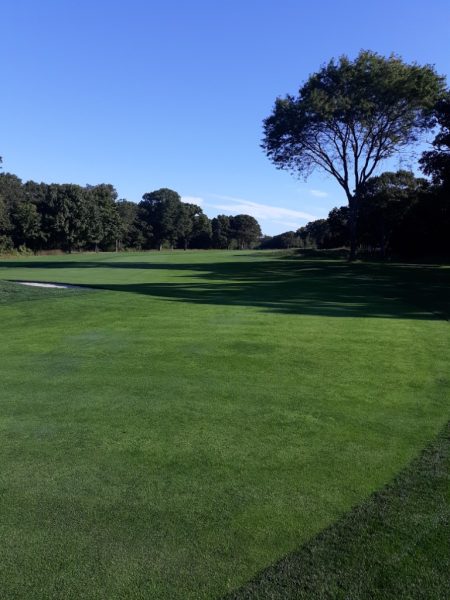

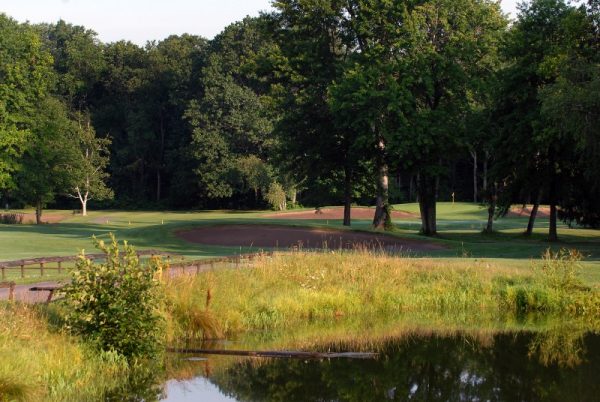
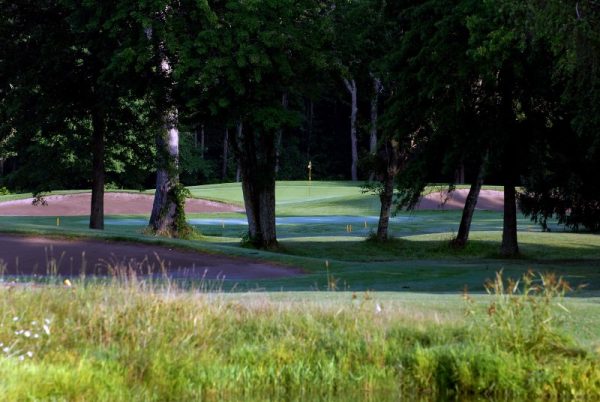
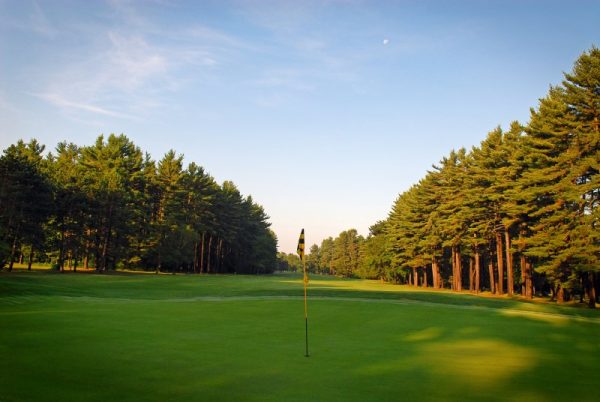
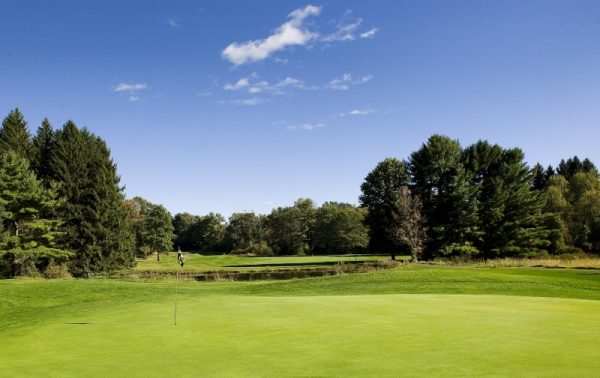
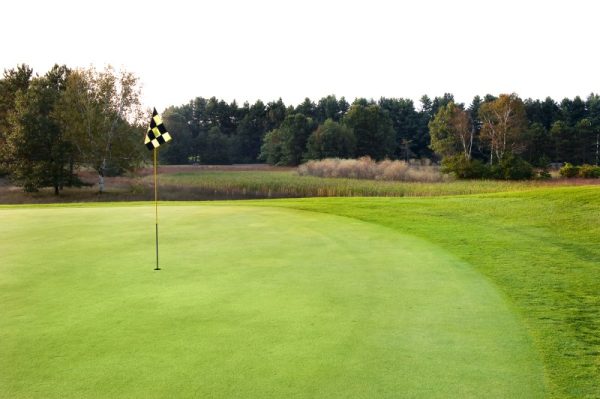
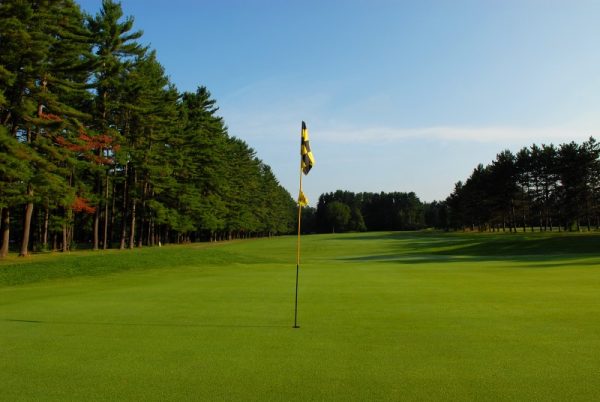
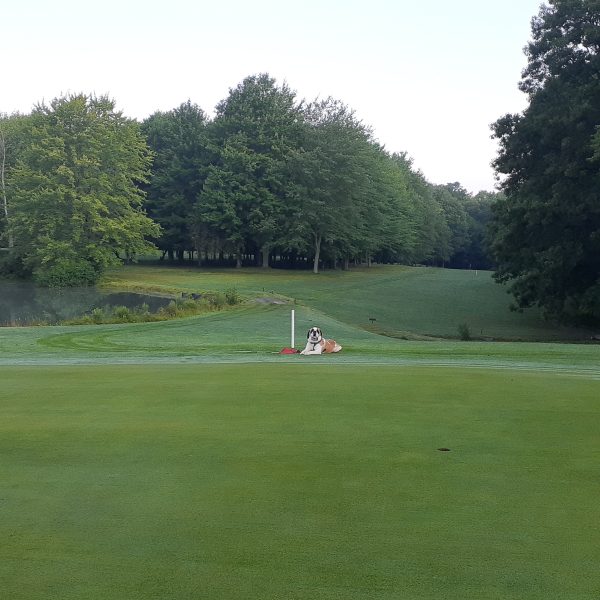
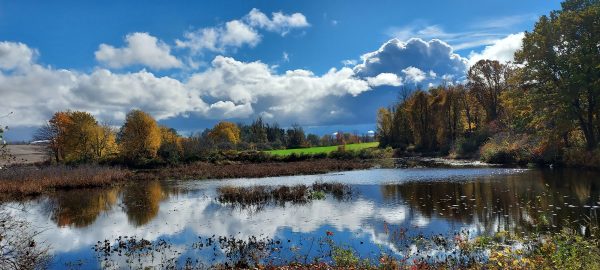
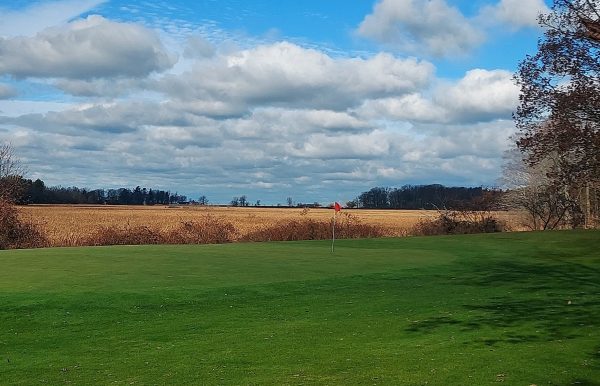
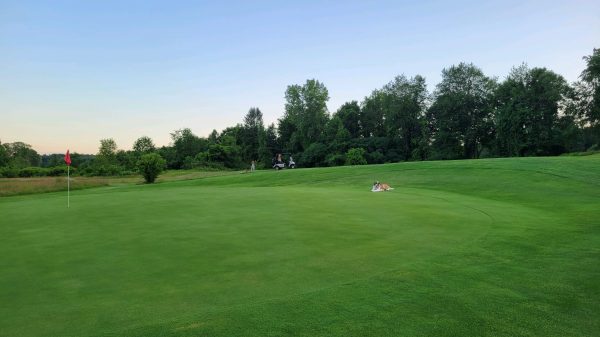
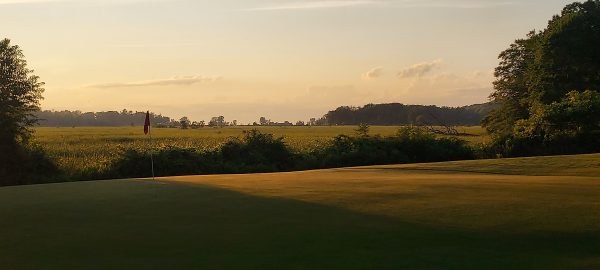
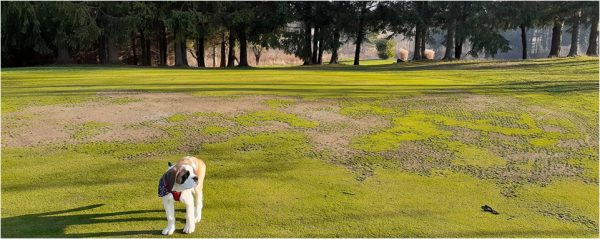
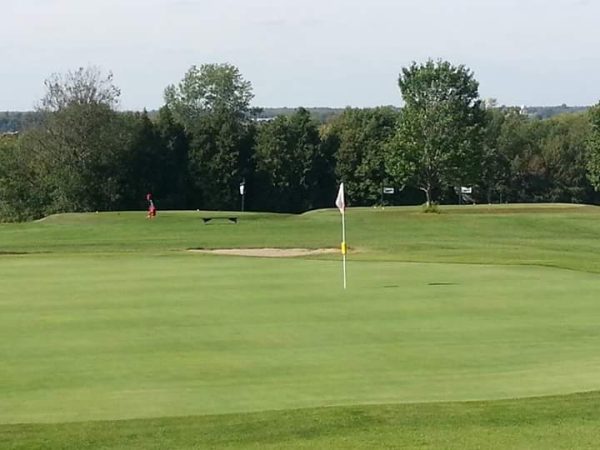
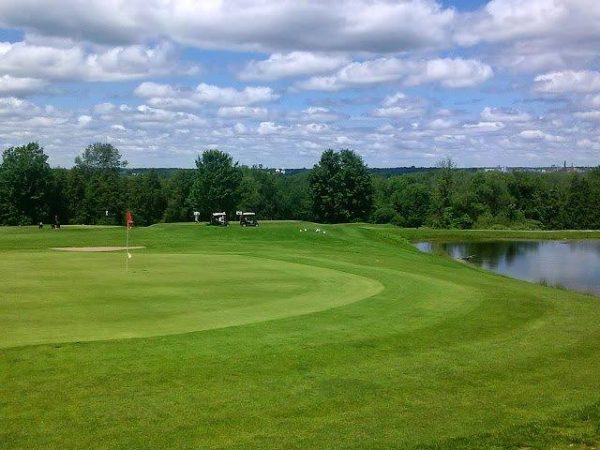
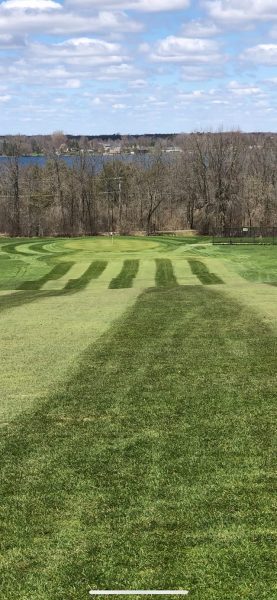

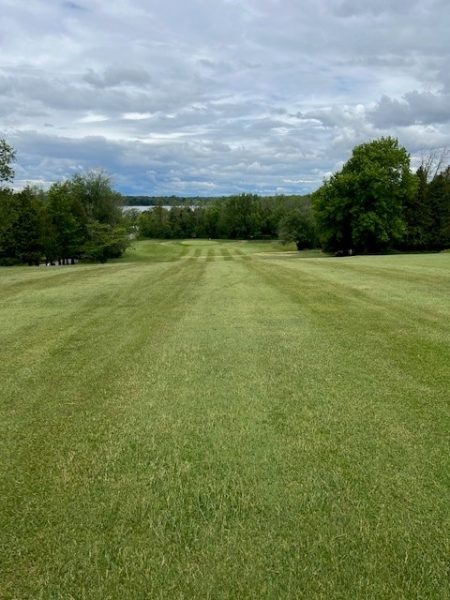
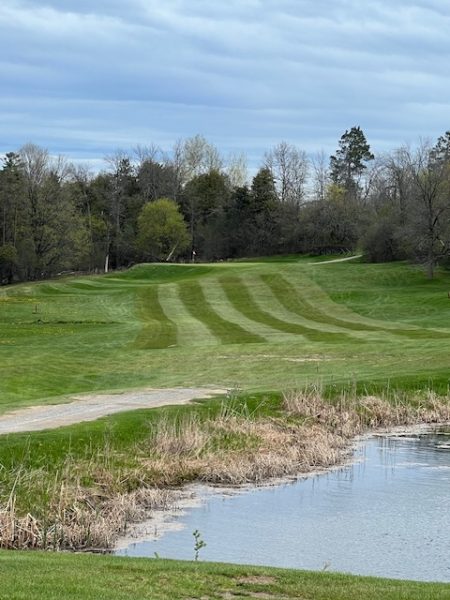
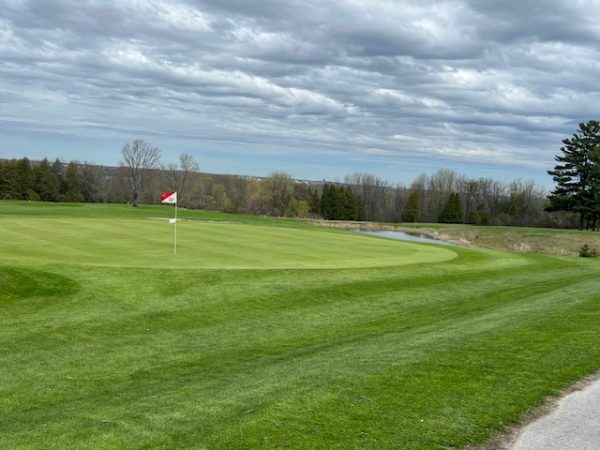
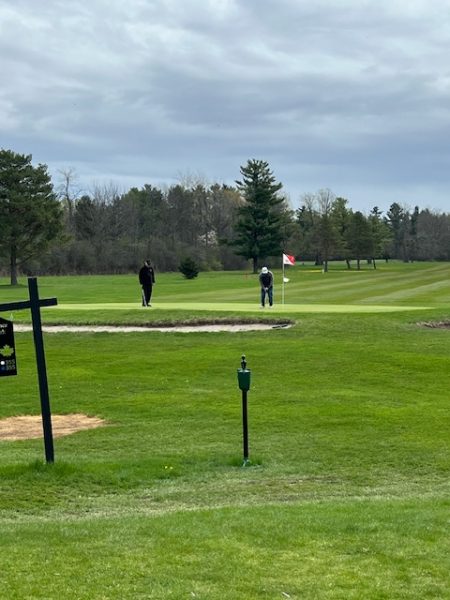
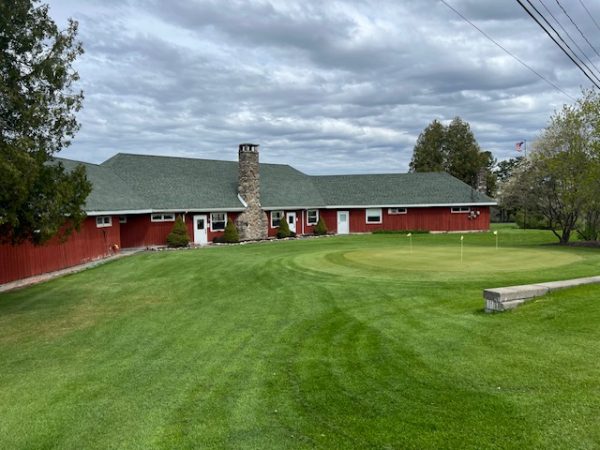
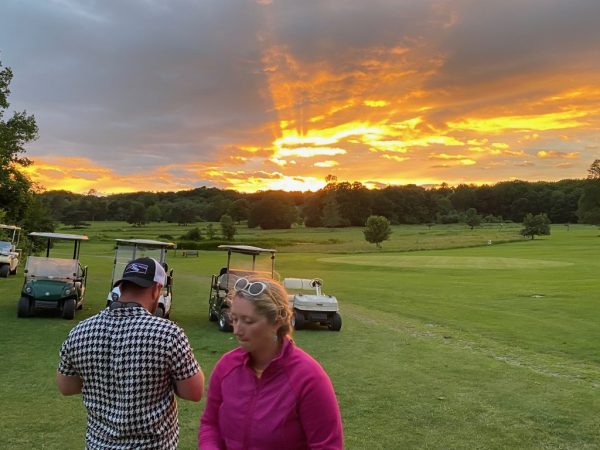
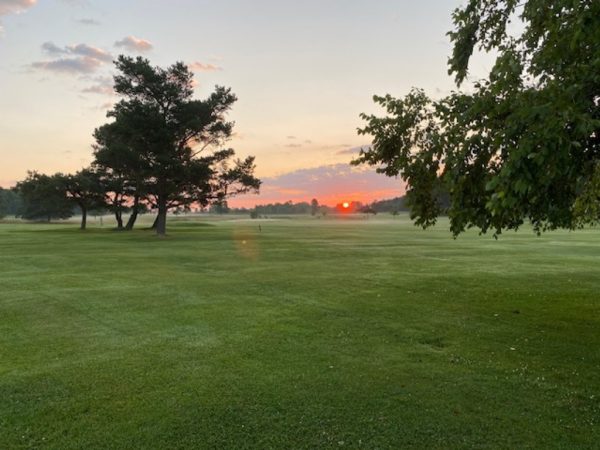
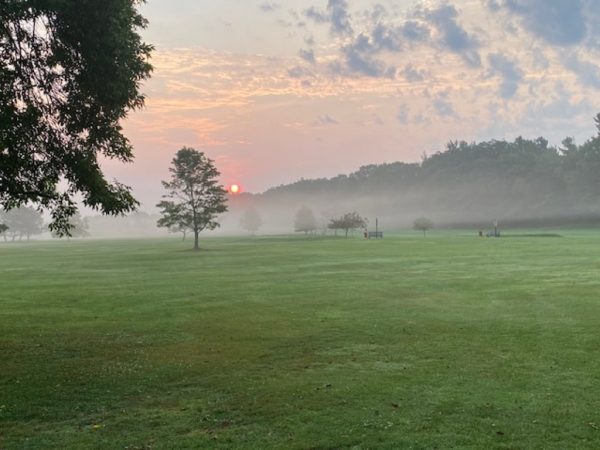
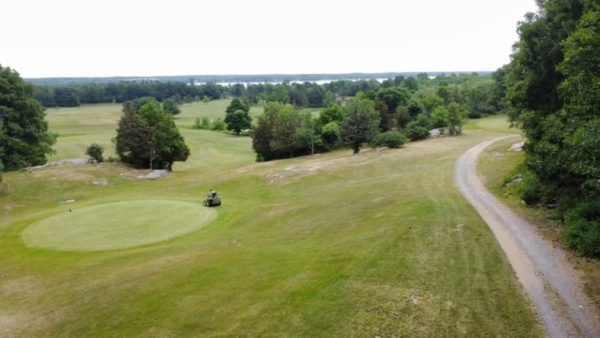

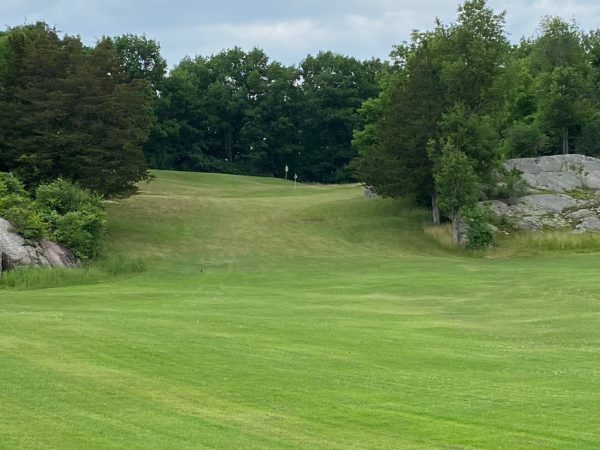






Big Chips Bus
Jun 5, 2019 at 4:08 pm
Thanks for sharing. I think you may have forgot to mention a visit to Pure Gold. Maybe next time.
Rob
Jun 3, 2019 at 5:17 pm
Living in Pinehurst, less than 20 minute walk from the hotel, I often take for granted all of the great things offered in our quaint little piece of America. Filled with history and legends, Pinehurst has also built itself into a great community for young families. The village council has made a great effort in the parks and land department to make it a liveable area regardless of your annual income, be it $100,000 or $10,000,000. We love it and are thankful others get to join us for a weekend getaway and experience Southern Hospitality at its finest.
S Saunders
Jun 2, 2019 at 7:20 pm
Pinehurst is 10 miles from my house. Today, I took the motorcycle there to look at the Spring flowers and the golf courses. Pinehurst is trendy and traditional at the same time. And rich. To get there, I rode past houses that were small and beat up. Old trailers, too. Now back home, I am trying to figure out: What is the purpose of wealth?
Andy
Jun 2, 2019 at 7:01 am
@slicksalmon—-I’ve been to pinehurst (area) many many times for less than $300 each time. There are courses all over the area and you can still experience the resort for food and drink without staying there. Having played with many friends who have plopped down the $$$ to play #2 in their own and then playing with those same guys at pine needles, they all enjoyed and liked pine needles more!!!! And don’t even get me started on how awesome Tobacco Road is!!
DDale
Jun 1, 2019 at 11:53 pm
Well written article, Johnny! Beautiful pictures! Thanks for the delightful article.
PK
Jun 1, 2019 at 9:23 pm
Fantastic read. Love this writer. More of this please.
Also, it would appear both Newbern men greatly out kicked their coverage. Nice work boys.
slick salmon
Jun 1, 2019 at 2:27 pm
Nice advertising piece. The author should have been more upfront about the cost of this adventure. Pinehurst isn’t a one-percenter playground, but it’s not cheap either. I’m guessing this little excursion cost upwards of $10k.
Johnny Newbern
Jun 1, 2019 at 3:24 pm
Sorry about that, SS. Wish I had more negative things to say about the place but my trip exceeded all of my expectations. I truly had a wonderful time. Here is a link to their common package prices. In my experience, the people at Pinehurst are willing to work with you to tailor your trip to suit your costs.
Thanks for reading!
https://www.pinehurst.com/offers/#golf-packages